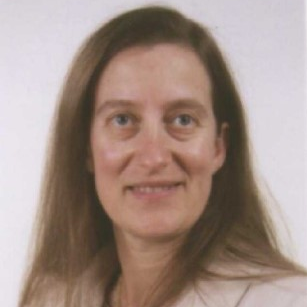Advanced Sorbents for Clean Water Production
A special issue of Materials (ISSN 1996-1944). This special issue belongs to the section "Thin Films and Interfaces".
Deadline for manuscript submissions: closed (20 October 2022) | Viewed by 3505
Special Issue Editors
Interests: transport properties (mainly diffusion coefficients in liquids and supercritical fluids; phenomenological modeling; molecular dynamics simulations); separation processes (adsorption/simulated moving bed; ion exchange; membranes; supercritical fluid extraction); synthesis and characterization of microporous materials for catalysis and separation processes
Special Issues, Collections and Topics in MDPI journals
Interests: Remediation of metal contaminated waters by sorption processes, either by reusing biowastes as sorbents either by developing highly selective and efficient magnetic nanomaterials for target elements. Synthesis/application of magnetic graphene-based composites for the removal of metal ions and recovery of technology critical elements, such as lanthanides or Platinum group elements, from water samples
Special Issue Information
Dear Colleagues,
According to the United Nations, in 2017, an estimated 3 billion people worldwide lacked the ability to safely wash their hands at home—one of the cheapest, easiest, and most effective ways to prevent the spread of diseases like COVID-19. Furthermore, despite the scientific and technological progress witnessed over the last few decades, 2.2 billion people throughout the world still lack access to safely managed water. To fight against these numbers, one of the Sustainable Development Goals of the United Nations is to improve water quality by 2030 by reducing pollution, eliminating dumping and minimizing release of hazardous chemicals and materials, halving the proportion of untreated wastewater, and substantially increasing recycling and safe reuse globally.
Fortunately, the growing awareness and sense of responsibility for the environment are imposing increasingly restrictive limits on pollutants discharged into the environment. Adsorption and ion exchange are well-established simple and effective separation processes that can be applied to drinking water treatment, advanced wastewater treatment, and nonpotable and potable reuse, helping to improve water quality and management. Many articles on new sorbents (i.e., adsorbents and ion exchangers) and membranes are published every year, including biosorbents (popular due to their availability and low cost) and various nanomaterials, functionalized hybrid solids, composites, and polymeric materials. In all cases, the main objective is the preparation of high-capacity sorbents exhibiting favorable kinetics and other designed properties.
In this context, it is our pleasure to invite you to submit your recent achievements—both theoretical and experimental—to this Special Issue as original research articles or reviews. Contributions on the development and characterization of biosorbents and new advanced materials, as well as their application to the removal of contaminants from synthetic and real waters, regeneration, and final disposal, are greatly welcomed.
Prof. Carlos Manuel Silva
Dr. Cláudia B. Lopes
Prof. Eduarda Pereira
Guest Editors
Manuscript Submission Information
Manuscripts should be submitted online at www.mdpi.com by registering and logging in to this website. Once you are registered, click here to go to the submission form. Manuscripts can be submitted until the deadline. All submissions that pass pre-check are peer-reviewed. Accepted papers will be published continuously in the journal (as soon as accepted) and will be listed together on the special issue website. Research articles, review articles as well as short communications are invited. For planned papers, a title and short abstract (about 100 words) can be sent to the Editorial Office for announcement on this website.
Submitted manuscripts should not have been published previously, nor be under consideration for publication elsewhere (except conference proceedings papers). All manuscripts are thoroughly refereed through a single-blind peer-review process. A guide for authors and other relevant information for submission of manuscripts is available on the Instructions for Authors page. Materials is an international peer-reviewed open access semimonthly journal published by MDPI.
Please visit the Instructions for Authors page before submitting a manuscript. The Article Processing Charge (APC) for publication in this open access journal is 2600 CHF (Swiss Francs). Submitted papers should be well formatted and use good English. Authors may use MDPI's English editing service prior to publication or during author revisions.
Keywords
- adsorption/desorption
- ion exchange
- nanoparticles
- zeotypes
- biosorbents
- composites
- functionalized materials
- remediation/recovery
- decontamination
- water and wastewater treatment
- resource recovery from wastewater
Benefits of Publishing in a Special Issue
- Ease of navigation: Grouping papers by topic helps scholars navigate broad scope journals more efficiently.
- Greater discoverability: Special Issues support the reach and impact of scientific research. Articles in Special Issues are more discoverable and cited more frequently.
- Expansion of research network: Special Issues facilitate connections among authors, fostering scientific collaborations.
- External promotion: Articles in Special Issues are often promoted through the journal's social media, increasing their visibility.
- e-Book format: Special Issues with more than 10 articles can be published as dedicated e-books, ensuring wide and rapid dissemination.
Further information on MDPI's Special Issue polices can be found here.








